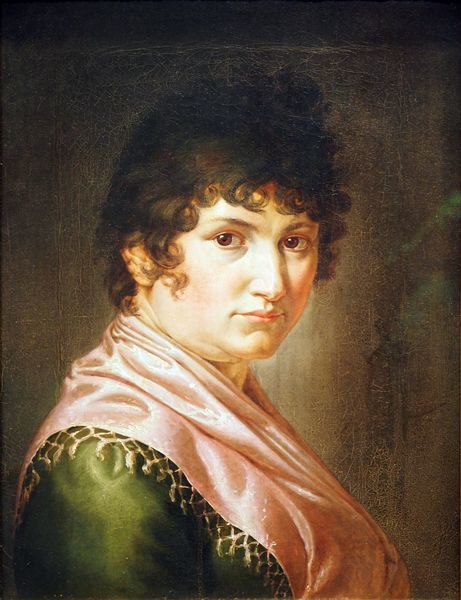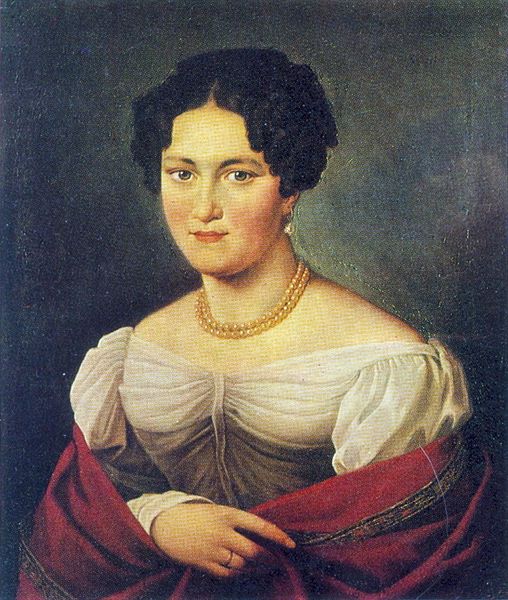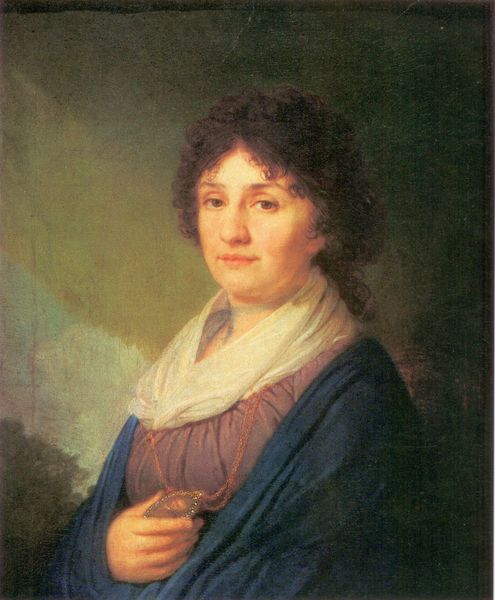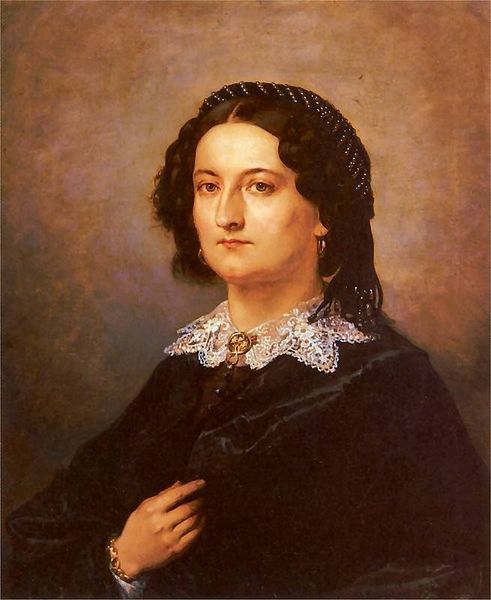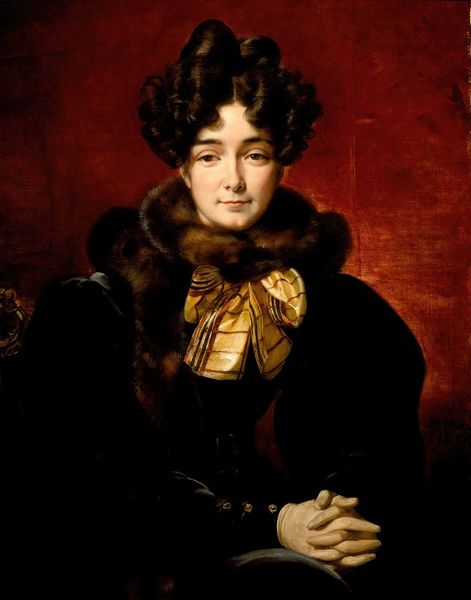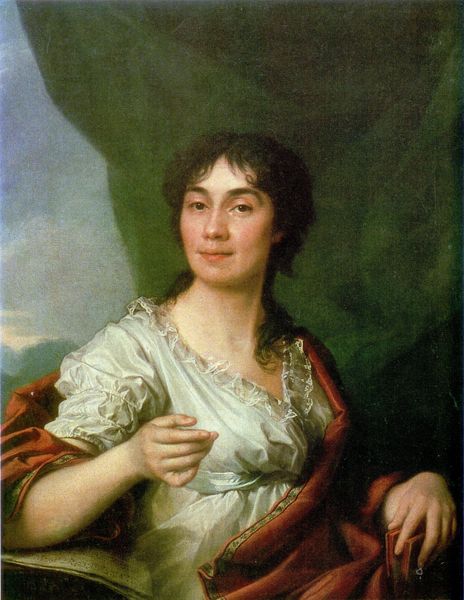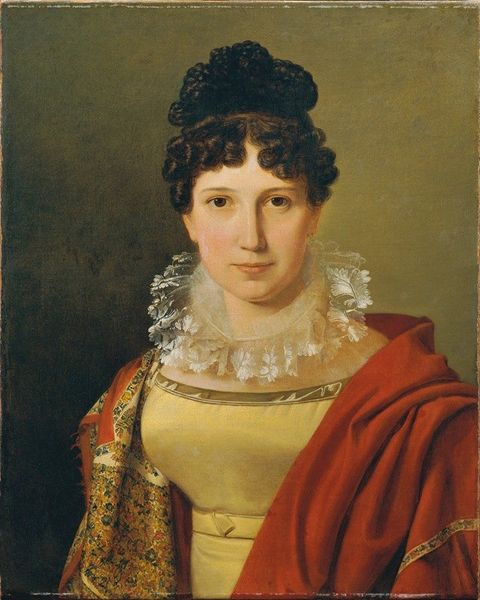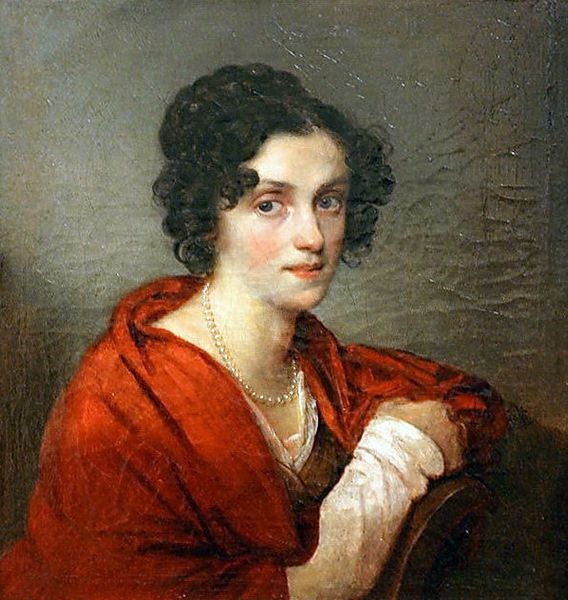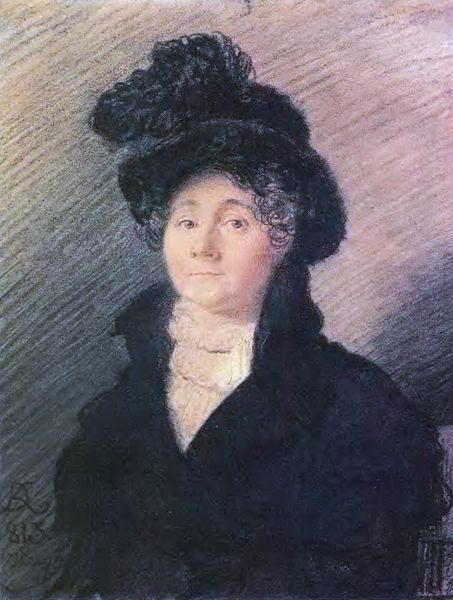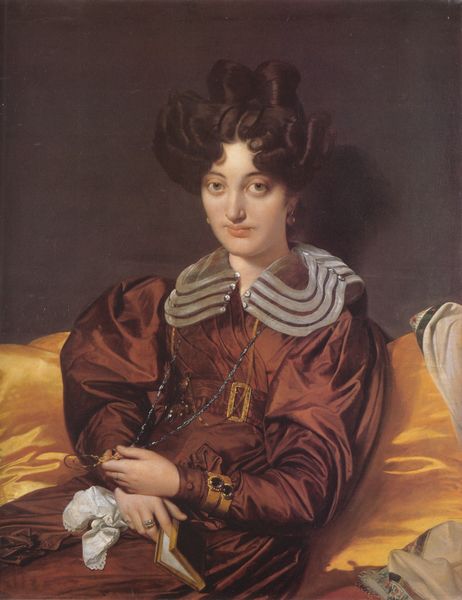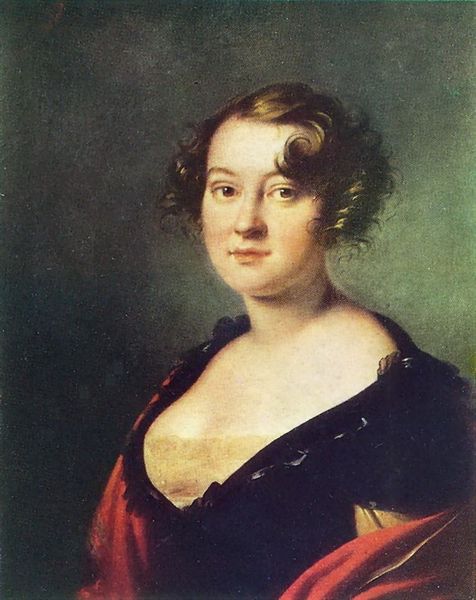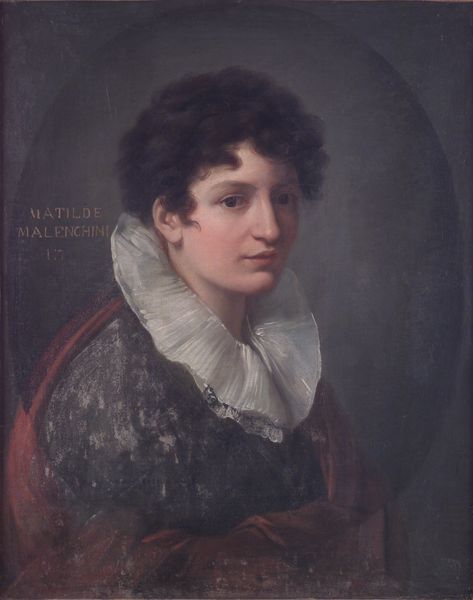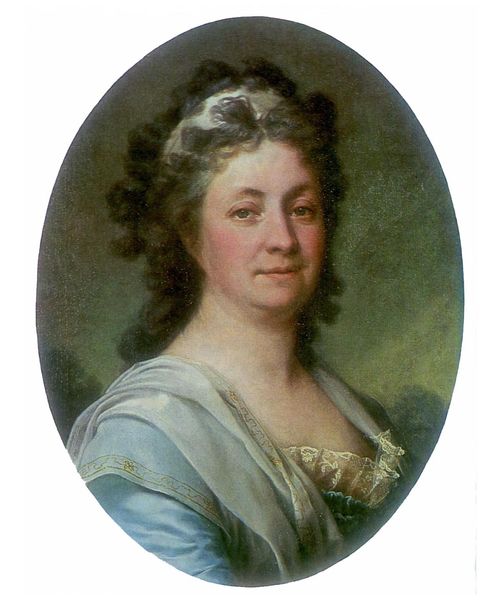
painting, oil-paint
#
painting
#
oil-paint
#
romanticism
#
history-painting
Dimensions: 71 x 57.8 cm
Copyright: Public domain
Curator: Orest Kiprensky's "Portrait of Darya Nikolaevna Chvostova," painted in 1814, offers us a glimpse into early 19th century Russian society. The oil painting, held at the Tretyakov Gallery in Moscow, situates Chvostova amidst a constellation of cultural and social meanings reflective of Romanticism's ascendancy in artistic circles. Editor: Whoa, those eyes! Seriously, she’s looking right at me, kind of like, "Yeah, I know what you’re thinking." And there’s a weight to her gaze, a seriousness. I’m almost intimidated by her. Curator: Indeed, her gaze is striking. Kiprensky masterfully uses light and shadow to draw our attention to her face, the focal point for understanding her character. During this period, portraiture served as a crucial tool for asserting social standing and constructing identity. This work fits squarely within those parameters. The composition invites questions regarding women’s agency, power, and representation within Imperial Russia. Editor: It's not just her gaze, it's her posture, too. The way she's holding that shawl…it's both elegant and almost…protective? And that frilly collar—talk about a statement piece. It's saying, "I'm here, I'm present, and I matter." Almost like armour…made of feathers. Curator: Absolutely. Romanticism’s influence on Kiprensky’s work provides an interpretive lens. We witness his deviation from strict Neoclassical forms through the painting’s emotive intensity. Analyzing gender theory offers deeper perspectives regarding constructions of femininity and societal expectations of women during this historical juncture. How did this impact Darya, what choices did she have? Editor: You know, looking at it, I can almost smell the faint scent of old oil paints and, something…dusty, maybe? Not in a bad way! It gives a real sense of history, like stepping back in time for a second, and thinking how did she feel, having Kiprensky painting her portrait? She looks a bit nervous, to be fair. Curator: And how her position contrasts, yet reinforces, power structures and cultural nuances is what makes this piece so interesting. What are our obligations towards works of art in archives and what responsibilities do those have? Editor: Well, that's me thinking of something completely different again! What an awesome, haunting encounter with a compelling and self-aware lady! It really brings history to life, and I find myself wondering more about who she really was and not simply about this work of art and her as the sitter!
Comments
No comments
Be the first to comment and join the conversation on the ultimate creative platform.
